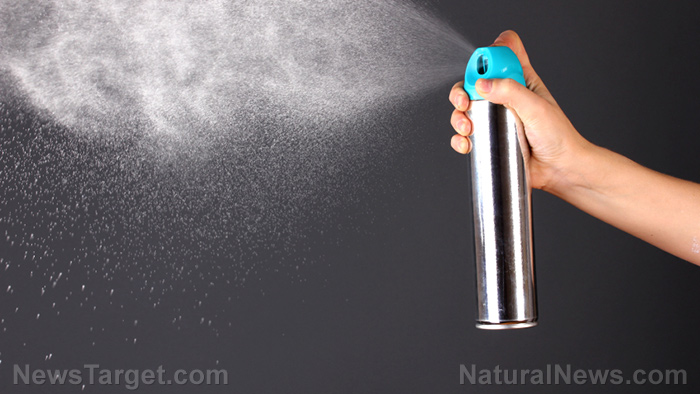
If you’re wondering where these toxins come from, you just need to look around inside your home. Here are some of the common household items that may be harming your health, as well as healthier alternatives you can use:
Air fresheners
Ironically, what is supposed to keep the air pleasant-smelling are actually very toxic, whether they’re in solid form or as aerosols, automatic sprayers, diffusers, or plugins. These air fresheners are petrochemically-based, which aggravate and trigger respiratory problems. They are also known to cause reproductive problems and birth defects and are linked to breast cancer, heart disease, and even diabetes.
Instead of relying on air fresheners to keep the air odor-free, you may want to consider opening your windows and removing the source of the offensive odors. It’s also a good idea to use natural air fresheners, such as flowers (as long as no one in your house has pollen allergies, of course) and citrus fruit peels.
Nonstick cookware
Searing meat and making omelets is easier when done on nonstick cookware. Unfortunately doing so also causes a lot of damage to your health. The black, nonstick coating is made of polytetrafluoroethylene which releases toxic gasses linked to cancer, organ failure, reproductive organ failure, and other health risks.
You may want to consider switching to stainless steel, cast iron, or porcelain coated pans. As for food sticking, you can avoid it by ensuring that the pan is really hot and that you apply the right amount of healthy oil before you put in whatever you need to cook.
Fabric softener and dryer sheets
There are numerous harmful chemicals in fabric softeners and dryer sheets, according to the Material Safety Data Sheets (MSDS) and the EPA. These include benzyl acetate, benzyl alcohol, ethanol, limonene, A-terpineol, ethyl acetate, camphor, chloroform, linalool, and pentane. These chemicals are linked to disorders of the central nervous system and are known to cause and worsen upper respiratory tract infections and different types of cancer. They can also trigger asthmatic responses.
Healthier alternatives include wool dryer balls or spiked dryer balls, which you can use to fluff your clothes. You can also add half a cup of vinegar to the fabric softener compartment in your washer. This method works because the acid of the vinegar neutralizes the laundry soap, so more residue is washed out in the rinse cycle, making clothes softer. Vinegar is also known to remove stubborn odors on clothes.
Antibacterial products
While it’s true that washing your hands is one of the most basic ways to prevent the spread of diseases, what you use to keep your hands clean can be hazardous to your health. There are many antibacterial products, including hand soaps and hand sanitizers, that contribute to the development of superbugs, germs that are resistant to antibiotics. These products may also be interfering with the proper function of the immune systems of young children, according to the Center for Disease Control (CDC). Furthermore, these products cause a buildup of triclosan not just in your body, but in water supplies as well.
The safest way to clean your hands is still with good old plain soap and water.
Compact fluorescent light (CFL) bulbs
CFL bulbs are bright, convenient, and power-efficient – what's not to like? According to the EPA, these bulbs need to be taken to special facilities for recycling or when they break. They even issued detailed instructions on how to dispose of broken light bulbs. All these precautions exist because CFL bulbs contain mercury, a toxic element that has many harmful effects on the nervous, digestive, respiratory, urinary, and immune systems. In bad cases, mercury poisoning may even be lethal.
As a healthier alternative, you can use old-fashioned light bulbs instead. But if you put a lot of emphasis on power-efficiency, light-emitting diodes (LEDs) could be one of your options – at least until something much better comes along.
Learn more about the dangers of harmful chemicals to your health at Chemicals.news.
Sources include:
Please contact us for more information.

















